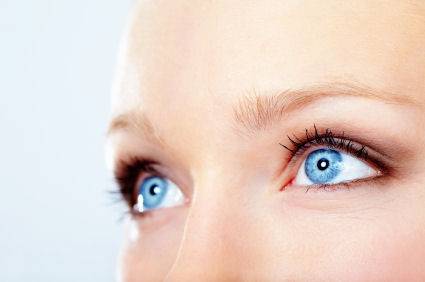
Did you forget to put on your sunglasses today? Are you constantly sitting in front of a computer screen without taking breaks to look away? Maybe you also skipped your yearly eye exam, again. These are just some of the things we tend to overlook when it comes to our eye health. But these seemingly innocent oversights, along with small decisions that we make on a daily basis can eventually take a toll on our eyes and our vision.
Now is the time to make changes to safeguard your vision - it's never too late to change a routine or break a habit. Here are a few tips that will help you get your eye health and vision on track in the blink of an eye.
1. Keep Screens at a Distance.
Screens and monitors are part of our everyday lives. We encounter them everywhere, from our personal smartphones, desktop computers, tablets and MP3's to movie theatres, sports games, airports, train stations and subways. Throughout the day, we tend to look at screens for long periods of time and we may work from handheld devices at much closer distances than we would read printed pages. Glare from screens can lead to eyestrain and computer vision syndrome. It’s recommended to position your computer screen at least an arm's length away and hold handheld devices 16 inches away from your eyes.
2. Blink, Blink, Blink. Another result of extensive device use is that your blink rate tends to drop when you stare at text on a screen. Not blinking often enough can lead to dry, irritated eyes. Apply the 20-20-20 rule: every 20 minutes look at an object 20 feet away for 20 seconds and don’t forget to blink!
3. Always wear your sunglasses to protect your eyes from harmful UV rays when you are outside or driving during daylight. Exposure to ultraviolet (UV) rays during any time of year can lead to cataracts or age-related macular degeneration (AMD) as well as sunburns on your eyes in extreme cases. Make sure that your sunglasses block 99 percent of UVA and UVB rays.
4. Eat seafood with Omega -3’s. Omega-3 fatty acids, found in cold-water fish such as tuna, salmon, mackerel and sardines, may help lower the risk of dry eyes and eye diseases such as macular degeneration and cataracts. If you don’t like seafood, consider taking fish oil supplements or other supplements that contain omega 3’s such as black current seed or flaxseed oils.
5. Go for Greens. Leafy green vegetables such as spinach, kale, broccoli, zucchini, peas, avocado and Brussels sprouts contain lutein and zeaxanthin. The AREDS 2 – Age Related Eye Disease Study – research conducted by the National Eye Institute (NEI) demonstrated that certain dietary supplements including these important pigments help prevent the progression of some eye diseases.
6. Drink green tea. Green tea is another great source of antioxidants which keep eyes healthy and defends them from cataracts and AMD development.
7. Care for your contact lenses. Always wash your hands before inserting or removing contacts and store them properly in cleansing solution. Never use any substances other than proper contact lens solution and make sure you follow your eye doctor’s instructions for proper use, because some eye drops contain ingredients which can react badly with your contact lenses. Keep a backup pair of glasses for days when the contacts “don’t feel right” or if you develop an eye infection. Do not wear contacts for longer than they’re supposed to be worn. If you keep waiting until your eyes begin to feel irritated before you change to a new pair of lenses, the eyes can gradually get desensitized, and damage may occur before the lenses feel dry.
8. Throw away old eye makeup such as mascara that is over four months old. Sharpen eyeliner pencils regularly and don’t put liner on the inside of your eye lid. If your eyes become irritated, stop using eye makeup until they heal.
9. Protect your eyes from danger. Always wear protective eyewear or safety goggles if your work requires eye protection and when working in the garden, doing home repairs or when dealing with strong cleaning substances such as bleach or oven cleaners.
10. Visit your eye doctor for a comprehensive eye exam at least once a year. Yearly eye exams are not only helpful in detecting early signs of eye disease, they are also an important indicator of your overall health. An eye exam can detect signs of cardiovascular disease, diabetes, stroke, brain tumors, aneurysms, and multiple sclerosis. Proper attention to vision problems can also enhance your safety and quality of life.
Knowing what you have to do is the first step in keeping your eyes and vision safe. Thinking about your eyes and vision and forming the right habits will lead to a lifetime of good vision.

